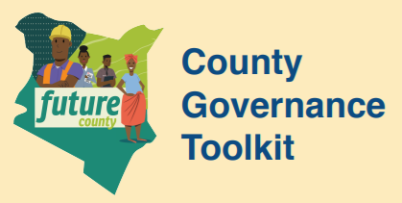Law is more prescriptive than policy in defining the conduct of government and society within a given jurisdiction. A legislative proposal should always emanate from a public policy, a decision-making process that sets the government’s objectives and the strategy to achieve them. Some policies require only relatively minor administrative or regulatory measures for their implementation, while others require the adoption of new legislation. Even the annual budget, which is a critical means to implement government policies, is converted into law by the County Assembly (appropriation).
When regulating conduct of government and/or citizens, law might offer incentives, or more often define sanctions and penalties for breaches of such conduct. Law may be developed for the long-term (e.g. constitution) or short-term (e.g. annual budget appropriations). Legislative proposals may originate from the Executive but also from political parties, business associations, organized groups or even individual citizens. All county laws are made (or passed) by the County Assembly.
Linkages
Upstream: Constitution, National Policy, National Law/Statute, County Policy
Downstream: Regulation, Programming
Short Description
Smart practice demands that law is preceded by policy, even though not all policies require laws, and may be effected through regulations (subsidiary legislation) or administrative action. Law making is most simply described as a participatory three-phase process. The first phase – legislative proposals - drives the decision on whether or not a law is needed. In this respect, legislative proposals are typically originated by the County Executive, but may also emerge from individual legislators, political parties, non-state actors, individual citizens or other stakeholders. This phase evaluates whether law making should proceed to the next phase. If so, legislative drafting is the primary focus of the second phase. This, largely technical, yet participatory, phase culminates in a draft bill that addresses the felt legislative need, is presented in a non-complex fashion and is consistent with the constitution and other established statute. The final phase – legislative approval – follows presentation of the bill to the County Assembly. The Assembly holds successive committee and plenary readings to review, discuss and debate the bill before a final vote is held to secure its passage. The whole process is carried out in accordance with existing Standing Orders, the set of rules that guide the working of the Assembly. Once the bill has been passed by the Assembly, a final approval step involving the Governor’s assent, after which it is eventually enacted into law.
For a more detailed description of the Law Making process, follow this link:
Law Making Step by Step Description
Laws and Regulations
Constitution of Kenya, 2010
County Government Act, No 17 of 2012
Public Finance Management Act, No 18 of 2012
Guidelines and Tools
A Guide to the Legislative Process in Kenya, KLRC, 2015
Model County Assembly Procedure and Practice Manual, SOCATT, 2018
County Public Participation Guidelines — MoDP&CoG, 2016
